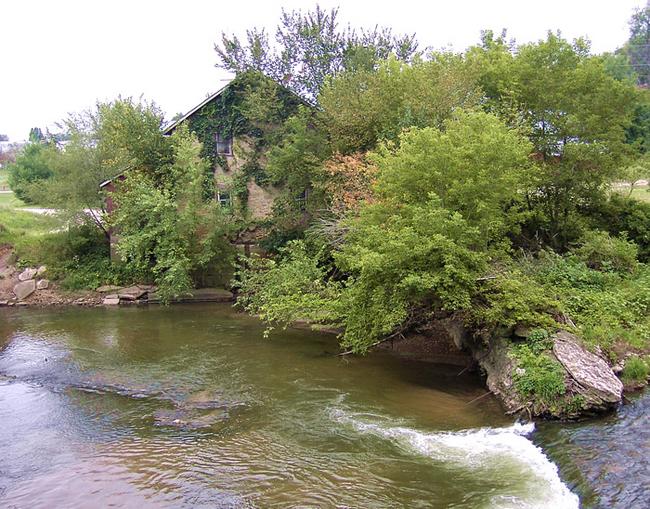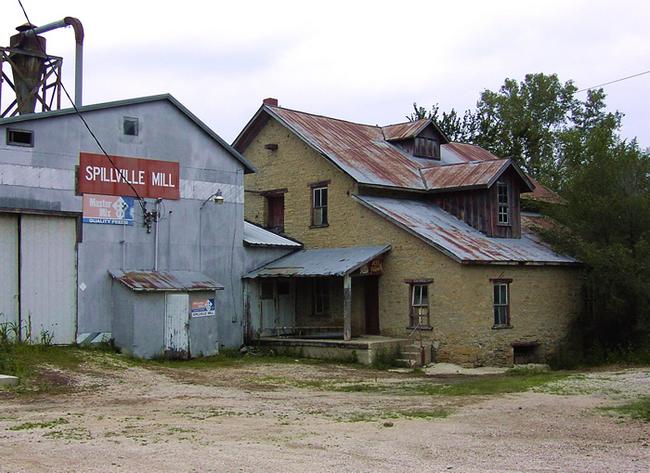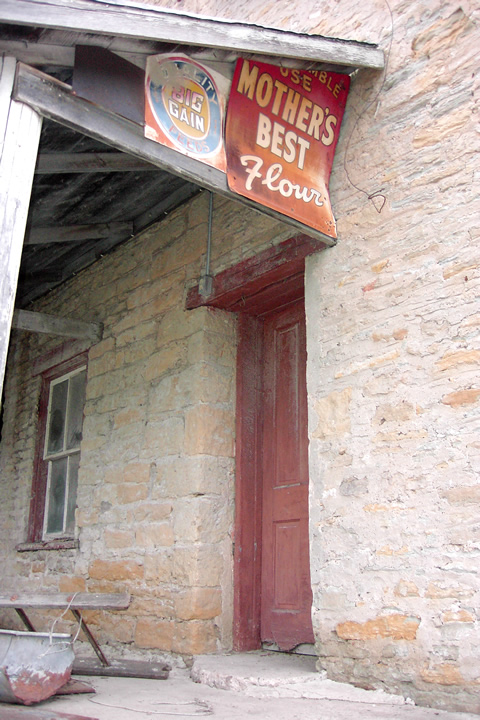
Spillville Mill / Big Stone Mills
Winneshiek Co. | Iowa | USA
Watersource: Spielman Creek at Turkey River
Spillville Mill / Big Stone Mills
Take US 52 south from Decorah about 8 or 9 miles, turn right on SH 325 and go 5 miles to Spillville. Turn right onto Ch W14/Main St. and travel 0.5 miles north through town the to the mill just past Mill St. by the bridge over the Turkey River. The mill is on the left side.

The Big Stone Mills began in 1865 through the efforts of Morse, Salls, and Collier, three businessmen from Decorah. The mill was later owned by John Barnatz, who also owned and operated the Barnatz-Painter Mill in Decorah at one time. Another old mill built on Wander Creek by Joseph Spielmann is no longer standing along the Turkey River tributary.

The little community of Spielville (Spillville) in 1860 boasted only about nine or ten families in addition to a hotel, a brewery, two merchant stores, a blacksmithy, wagonmaker, tinssmith and a carpenter. Others soon moved in around this core nucleus, mostly Czech immigrants, Swiss, and German settlers. The mill could grind 300 bushels/day. July 1869- June 1870's production of 56,900 bushels was divided into 6,000 barrels of flour and almost 230 tons of livestock feed. Big Stones Flour was in great demand in Chicago, a main market, and did well against better known brands, selling for $4.00/barrel.

The mill was powered by a 48" Leffel hydraulic turbine which in turn was powered from the water impounded by the spar dam behind the mill on the Turkey River. John J. Haug, a native Switzer, was involved to some extent with the flour mill, a bank, a creamery, and was a sizeable landowner. The mill is currently the object of a restoration effort.

Two churches were also built early on. The St Clements German Catholic Church, brick in 1860, was built to replace an earlier log cabin meetinghouse. The Czechs also built an imposing limestone church, St Wenceslaus Catholic Church at about this same time and a limestone two story parochial school in 1870, named St Wenceslaus. Both the church and the school are the oldest Czech Catholic church and school in the nation.

Spillville is also noted for its Bily Clock Museum and the museum commemorating Antonin Dvorak's summer spent with his family in Spillvile in 1893. He was related the J. J. Kovarik, the teacher at the St Wenceslaus Parochial Catholic School. While in Spillville, he composed his Opus 965: Quartet in F Major (The American Quartet) and his Opus 97: Quintet in E Flat Major. He also played daily the pipe organ in the St Wenceslaus Church.

*Update: I was waiting for them to finish what they are going to put where the mill was but they ran out of money last fall, 2011, and I was going to wait to see if they would have it finished this summer so I could include a picture of that, but they haven't done anything on it for about a year. They were going to make it into a park. Zach Bulger 07/04/2012* Pictures soon

Cyril M. Klymesh, a native son of Spillville now residing in Oregon and author of the book "They Came to this Place - A History of Spillville, Iowa, and Its Czech Settlers" a definitive history of Spillville, in 2007 announced his wishes to donate the mill to Czech Heritage Partnership, which would oversee fundraising and restoration of the millfor the future. Mr. Klymesh had purchased the mill earlier with the hopes of future restoration. Sadly the mill was taken down in the fall if 2011, some stones of which can be seen in the distance by the barn.